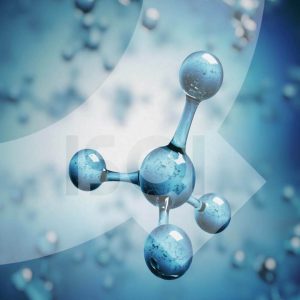In recent years, the world, faced with the challenges of climate change and the compelling need to reduce greenhouse gas emissions, has been exploring sustainable and clean energy sources like never before. Ammonia fuel is emerging as a promising contender in the quest for low-carbon energy. In this article, we delve into what ammonia fuel is, its advantages, challenges, and its potential to transform the energy landscape.
What is Ammonia Fuel?
Ammonia fuel is a fuel derived from ammonia (NH3), a chemical compound composed of nitrogen and hydrogen. This colorless gas has a pungent odor. Traditionally, ammonia has been used in various industrial applications, including fertilizers and refrigerants (fluids in refrigeration cycles that typically undergo phase changes between liquid and gas). However, recent innovations in the production and use of ammonia have sparked interest in it as a green energy carrier.
Benefits of Ammonia Fuel
-
Zero Carbon Emissions:
One of the most significant benefits of ammonia fuel is its potential for zero carbon emissions. This makes it an attractive option for reducing greenhouse gas emissions, especially in sectors where electrification is challenging (such as shipping and heavy industries).
-
High Energy Density:
Ammonia has a high energy density, meaning it can store and transport a considerable amount of energy in a relatively small volume, turning it into a suitable energy carrier.
-
Existing Infrastructure:
Ammonia can utilize existing infrastructure for production, distribution, and storage, requiring no need for extensive infrastructure development.
-
Potential for Green Hydrogen:
Ammonia can be produced through water electrolysis, offering the potential for producing green hydrogen. This capability makes it a viable option for storing and transporting green hydrogen.
Challenges and Drawbacks of Ammonia
While ammonia fuel presents a hopeful solution as an alternative to fossil fuels, it is not without challenges:
-
Safety:
Ammonia is toxic and can pose serious safety hazards. Proper transportation and adherence to safety measures in the storage of this fuel are crucial.
-
Energy Dependency in Ammonia Production:
The production of ammonia typically requires a significant amount of energy, which needs to be supplied from fossil fuels.
-
Infrastructure Development:
While utilizing existing infrastructure is an advantage for ammonia fuels, there is still a need for substantial investments in the production, distribution, and storage facilities for ammonia.
-
Technical Challenges:
The use of ammonia as a fuel in engines and turbines requires compatibility and further technological innovations to optimize efficiency.
Potential of Ammonia Fuel
Ammonia fuel has the potential to transform the methods of energy production and consumption. Some key areas where ammonia fuel can replace old methods include:
-
Transportation:
Ammonia can replace traditional marine fuels and reduce greenhouse gas emissions from the shipping industry.
-
Industry:
Various sectors of heavy industries such as steel and cement production can use ammonia as a clean energy source.
-
Hydrogen Storage:
Ammonia can serve as an efficient means in the production, storage, and transportation of green hydrogen.
-
Energy Exports:
Countries with abundant renewable energy resources can produce ammonia and export it to other regions.
Summary:
Ammonia fuel signifies an exciting development in the path toward achieving a sustainable energy future. With its potential to produce zero-carbon pollutants, high energy density, and adaptability, ammonia fuel plays a crucial role in reducing greenhouse gas emissions and providing clean energy solutions for industries facing carbon neutrality challenges. With continued research and development efforts, ammonia has the potential to emerge as a cleaner and greener fuel globally.











